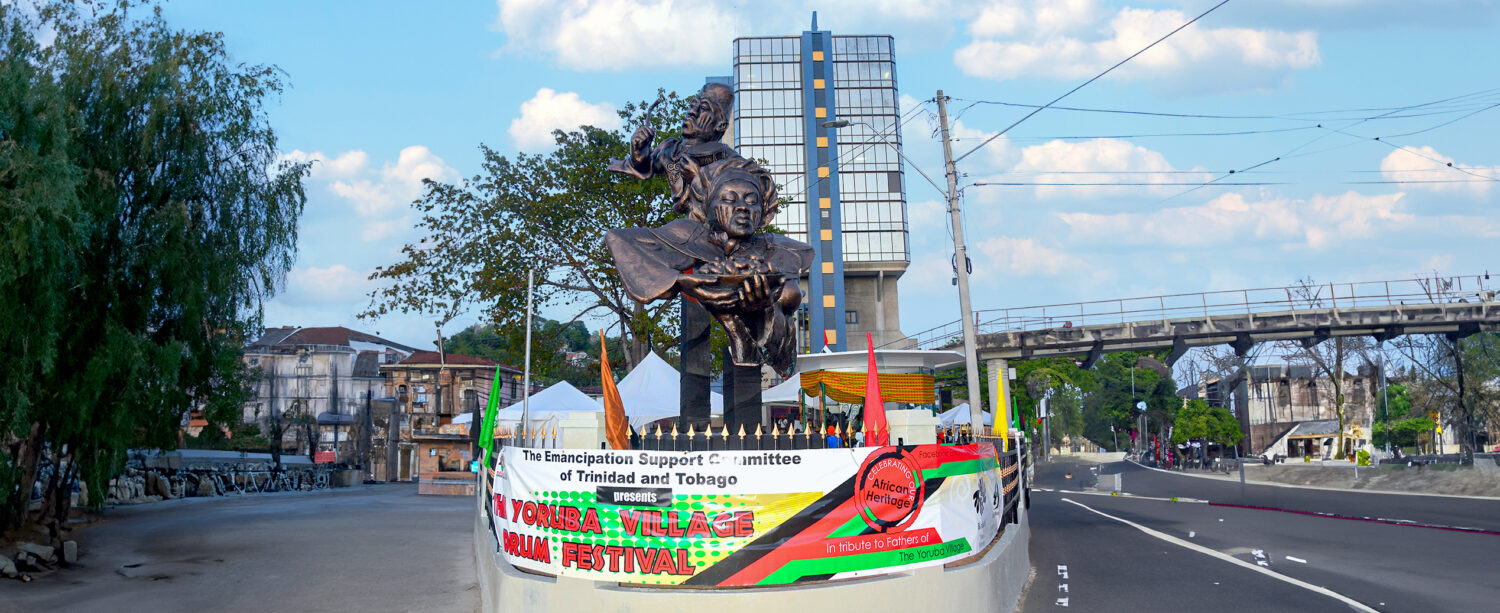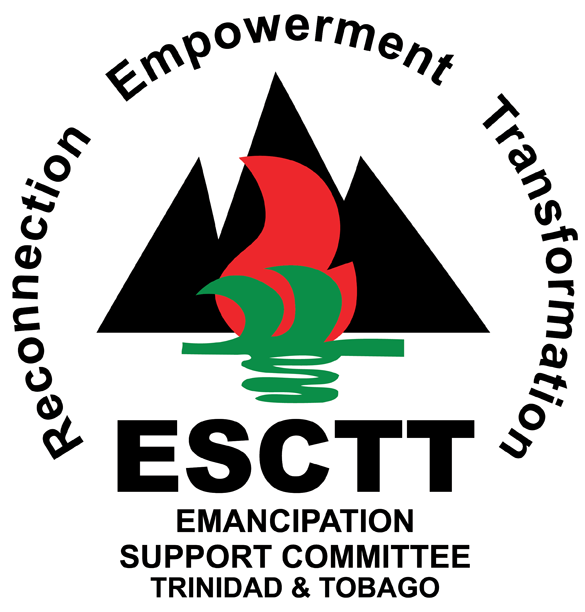
Monument at Yoruba Village Square, Port of Spain.
The monument was commissioned by the Emancipation Support Committee of Trinidad and Tobago (ESCTT) and designed and constructed by artists, Sherlann Peters and Maria Diaz. The ESCTT expresses its gratitude for the sterling support of Ogbeni Rauf Aregbesola, former Governor of Osun State in Nigeria, the East Port of Spain Development Company Ltd and the Port-of- Spain City Corporation, without which the construction and installation of this monument would not have been possible.
Monuments are erected to honour persons who reflect the best values of a society at particular periods in history. They are also erected to record historic events ranging from military to civil, not all of which are positive, as the memorialising of a site or moment of crimes against humanity, such as genocide.
By and large, the rationale for erecting a monument at Yoruba Square falls within both categories: the need to memorialise a historic event, the arrival of Yoruba in Trinidad and their settlement in Yoruba Village; it also serves to honour the Yoruba and their descendants, known and unknown, who provided leadership in the struggle against slavery and colonialism, and contributed immeasurably to the overall development of Trinidad and Tobago.
Yoruba Square memorialises the Yoruba of Trinidad. The square is located at the south-western “entry” to Yoruba Village, a conglomeration of urban and sub-urban communities including Belmont (originally Freetown), Gonzales, Laventille, Success Village, John John, East Dry River and Morvant.
There were Yoruba in Trinidad during the era of slavery, but the vast majority of the ancestors of Yoruba Village arrived in the island-colony of Trinidad from the 1830s as “Liberated Africans” under five-year indentureship, a form of forced labour, imposed on them as the price of their freedom.
Yoruba Village has produced some of the most outstanding citizens of the country, many of whom are also icons in many foreign countries. These names are definitely too numerous to mention. Included are Le Roi Clarke, David Rudder, Winston Spree Simon, Calypso Rose, George Bailey, Luthalo Masimba (Brother resistance).
The Yoruba have played a key role in maintaining the culture of Africa in Trinidad, including dances, drumming and drum-making, calabash carving, metal working, masks and masquerades, call-and-response songs, vast repertoire of cuisines, susu (esusu), Saraka, herbal knowledge and herbal science, Ifa, folklore, among other cultural legacies. Ifa survived many state-sponsored suppression tactics and general stigmatisation as demonic. The Shouter/Spiritual Baptist faith would not exist without the Yoruba people and Ifa.
The monument which was unveiled in the Yoruba Village Square on 18th June 2022 at the Yoruba Village Drum Festival, pays homage to the struggles of African peoples for freedom from enslavement in Trinidad and Tobago and honours their overarching contribution to the culture and development of the country. It celebrates in particular the Yoruba, Rada and all other groups and their descendants that settled in East Port of Spain and helped to build the communities now known collectively as Yoruba Village.
The monument reflects the bond between homeland and diaspora. It should speak to the survival and resilience of the community, their spirituality and accomplishments and their vision of true liberation.
